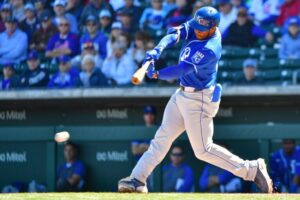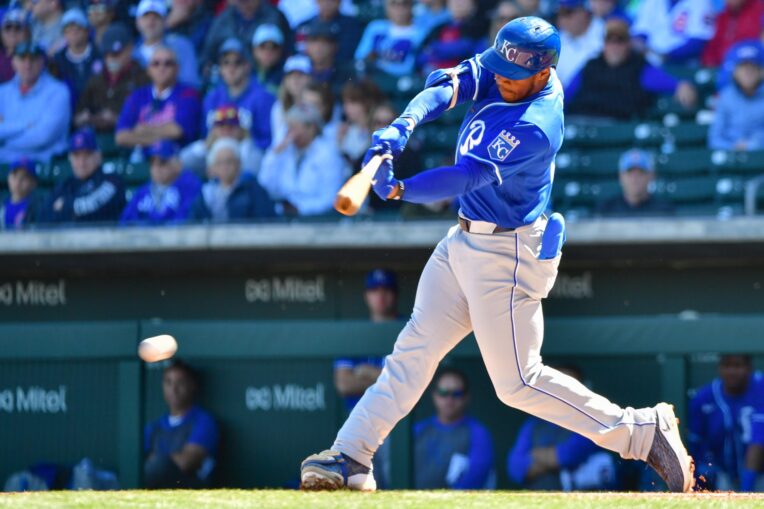
Late Wednesday night, the New York Mets sent Josh Winckowski, recently acquired from the Toronto Blue Jays for Steven Matz, to the Boston Red Sox. They’ll also send a Player to be Named Later to either the Red Sox or the Kansas City Royals — that move, as the name suggests, won’t come until later. In exchange, the Mets acquired Khalil Lee, a 22-year-old outfield prospect. Lee, from what I’ve seen, instantly becomes a top-10 prospect in the Mets system. In his last full season, he batted .264/.363/.372 at Double-A Northwest Arkansas in 2019. The headline on that season was probably his 53 stolen bases.
This trade, I must say, is a weird one. It’s a good one, to be sure, but in a strange way. It’s essentially a prospect swap, Winckowski for Lee, plus a player to be named later. For one, the whole “player to be named later” idea has always seemed a tad off to me. It just doesn’t make sense; why not name the player now? It’s not the biggest deal in the world though, because PTBNLs rarely end up being consequential.
Roughly speaking, you can divide all baseball players into about seven tiers, from “legendary” to “forgettable” in descending order: Willie Mays tier, David Wright tier, Daniel Murphy as a Met tier, Ed Kranepool tier, Luis Castillo tier, Mike Nickeas tier, Joe Hietpas tier. Maybe I’m remembering this wrong, but Players to be Named Later almost always seem to fit perfectly into the Nickeas tier, not really making a baseball impact but just sort of existing.
The other reason — frankly, the main reason — this trade is strange is it doesn’t really comport with a conventional theory of trading. Usually, there are more or less two sides to a trade: A) a team wants to improve enough to win a division or chase a playoff spot and is willing to give up something in the long run, or B) a team wants to shed salary and build up a talent base for the long term and is willing to sacrifice something in the short term. Obviously, you’ll also sometimes see trades based on mutual need that don’t fit in with the long-term/short-term framework. If the Mets were to trade Dominic Smith straight-up to a team that needed a first baseman in exchange for an MLB-ready, quality starting pitcher, both teams would fill immediate needs.
This trade isn’t any of that. For now, it seems like a straightforward prospect-swap. There are basically two explanations I can think of for the deal: either the Mets are trying to build up their farm system piece-by-piece without trading away big-league talent, or they want to turn Lee into part of a bigger trade. It’s hard to say which is closer to the truth, because both are plausible. If the Mets think Lee is close to being an MLB-ready outfielder, maybe they’re preparing for the possibility that Michael Conforto departs as a free agent after 2021. Or, the likelihood that the Designated Hitter comes to the National League in 2022 for Pete Alonso to take that position, Smith to move over to first, and Lee to slot into the outfield that way.
On the other hand, Lee is also supremely tradeable. He’s a 22-year-old outfielder with all of his team control and options and everything, who stole 53 bases in his last full season. What team wouldn’t want that? The Chicago Cubs, for instance, have apparently been stubborn in their demand for catching prospect Francisco Alvarez if they’re going to part with Kris Bryant. Would they take a prospect package including Lee instead — and have they told the Mets as much?
The thing is, whatever the Mets endgame with this trade is, it’s already a good move. Pending the Player to be Named Later, they’ve basically turned Matz into Lee. Matz was a non-tender candidate, so turning him into a top-10 organizational prospect is far from trivial. The question now is what they do next, and how Lee fits in.
Andy Martino of SNY reported yesterday that the Mets were working on trading Jeurys Familia and Dellin Betances. They’re clearly still working on freeing up salary and/or making splashes in the trade market, and it certainly seems like they have an ultimate plan more impactful than what happened Wednesday night. Lee might be another trade chip, just like Winckowski. If Matz could start a chain reaction of trades that led to New York acquiring someone like Kris Bryant, that would certainly be a fun chapter in Mets history. Or Lee might just be a future candidate for the Mets outfield himself.
We’ll see — but for now, we just don’t know. The trade was a good one, but it was also delightfully, puzzlingly weird.
















